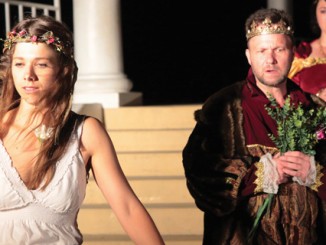Paella is one of those dishes that seems so effortless and yet most mere mortals won’t attempt it at home for fear of failure. Miguel Cuevas, Australian-based Spanish chef and caterer extraordinaire, is hosting a competition to find the best paella chef in Oceania, who will then go on to compete in the famed Sueca Paella Festival in Valencia, Spain, later in the year. Suffice to say, he knows a thing or two about the iconic Spanish dish, so here ’tis, in just seven steps.
Paella in seven steps
(Serves 10)
Ingredients:
1kg rice Bomba or Calasparra from Spain or short grain Australian rice, 63g salt, 1.5kg Australian barramundi in cubes, 1.5kg Australian calamari in rings, 1 WA lobster in two halves (optional), 10-15 Tasmanian mussels washed, 10 Australian Ocean Tiger Prawns (or your favourite prawns) peeled or unpeeled, 250g ripe tomato crushed or diced, 500g local green beans, 2 garlic cloves (peeled and chopped), 350ml Australian extra virgin olive oil, a spoon of non-smoked paprika from Australia, 1/2g Tasmanian saffron threads soaked in water for 1 hour, a small pinch of Australian lemon myrtle
Method:
1. Heat 150ml of the oil. Fry the prawns, half the lobster and one chopped garlic. Set aside.
2. Fry the mussels until they all open up and mix them well with the oil. Set aside.
3. Add the rest of the oil and fry the barramundi, calamari and then the shredded meat of the other half lobster.
4. Add green beans and garlic. Fry it all together for 2-3 minutes. Add the tomato and let it all infuse together.
5. Once the tomato is reduced, mix in the paprika, add 2.7 parts of water for each part of rice (less if is Australian rice) and increase to maximum heat for 5-7 minutes. Add saffron, salt and meat of 2 mussels.
Tip: you can prepare an amazing stock beforehand with water, heads of the prawns and ½ an onion.
6. Once it boils, add the rice and distribute it evenly, then don’t move it again. Leave the heat on maximum for 7-10 minutes, and then as the rice absorbs the water reduce the heat accordingly. Keep carefully probing that the rice is not burning (but never stirring the rice!). What you are aiming for is for the ‘socarrat’ (the rice at the bottom of the pan where some will stick to the pan) to be of a light brown colour. The quality of the socarrat for Spaniards is so important that I don’t hesitate to compare it to what ‘al dente’ is for Italians, so beware!
7. Once the water in absorbed you will hear the rice at the bottom making a ‘popping’ sound. Add a little pinch of lemon myrtle on top of the paella for an aromatic touch. Buen provecho!


Leave a Reply
You must be logged in to post a comment.